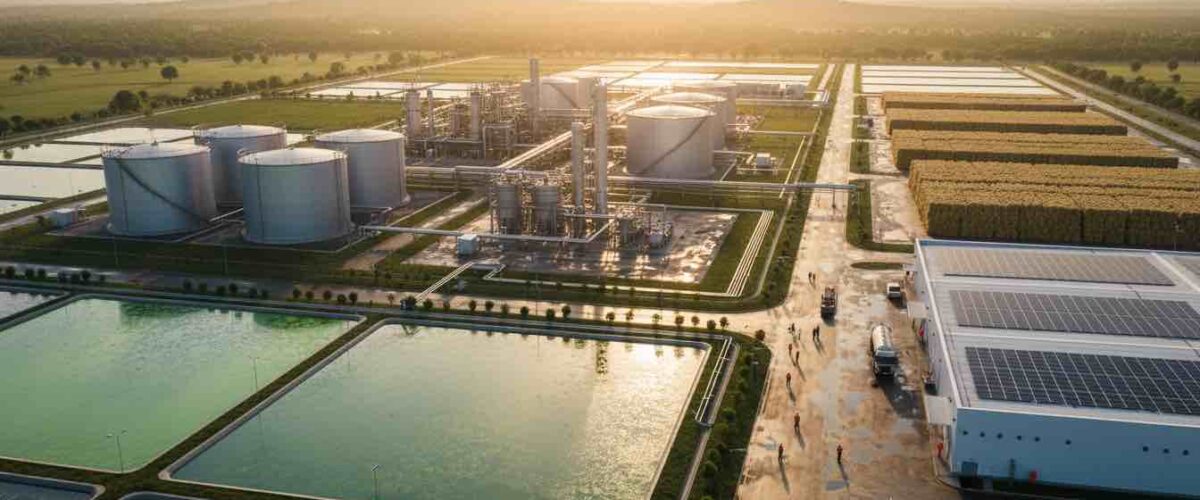The global energy market is entering a new chapter, one defined not only by petroleum but also by the steady rise of biofuels. Governments, corporations, and traders are increasingly recognizing that the energy transition will not unfold as a sudden leap but as a gradual blending of old and new. This reality is reshaping the way commodities are sourced, stored, blended, and traded.
Why Biofuels Are Gaining Ground
Biofuels derived from crops, waste oils, and advanced feedstocks are viewed as a practical bridge toward decarbonization. They can often be used in existing engines, pipelines, and shipping vessels with minimal modifications, making them an attractive option for sectors that cannot easily electrify. Demand is especially strong in aviation, shipping, and road transport, where governments are tightening emissions standards and mandating renewable fuel quotas.
From a trader’s perspective, biofuels represent both a challenge and an opportunity. They are subject to agricultural cycles, weather variability, and regional policy incentives. Yet, with carbon markets and green premiums emerging, biofuels can deliver margins beyond what conventional petroleum alone provides.
Integrating Biofuels into Petroleum Portfolios
- Blending and Compatibility
Most biofuels, such as biodiesel (FAME) or ethanol, are traded not as stand-alone replacements but as blends with conventional petroleum products. Traders must understand blending economics—how different feedstocks behave, how blending affects product quality, and how pricing structures shift. - Storage and Logistics
Biofuels are more sensitive to contamination, water absorption, and degradation than fossil fuels. This requires upgraded tank infrastructure, dedicated pipelines, and stricter quality monitoring. Midshore and port operators are already exploring dedicated tanks for ethanol and sustainable aviation fuel (SAF). - Regulatory and Certification Requirements
Unlike petroleum, biofuels trading is highly influenced by certification schemes such as ISCC (International Sustainability & Carbon Certification) or national mandates in the EU, US, and Asia. Traders must ensure traceability of feedstocks and compliance with sustainability criteria. - Pricing and Risk Management
Biofuels markets are less liquid and less standardized than petroleum. Hedging tools are limited, and volatility can be high due to crop yields or subsidy changes. Forward-thinking traders are beginning to use hybrid strategies, balancing petroleum’s liquidity with biofuels’ green premiums. - Partnerships Across the Value Chain
To succeed in this hybrid market, traders are increasingly forming partnerships with agricultural suppliers, biotech firms, and logistics providers. These alliances not only secure supply but also provide credibility in sustainability reporting.
Strategic Advantages of Diversification
For petroleum-focused traders, integrating biofuels into portfolios is more than compliance—it’s about resilience. A mixed energy book spreads risk across fossil and renewable markets, opens access to green finance, and positions firms as reliable partners for airlines, shipping companies, and governments under pressure to cut emissions.
Moreover, biofuels trading enhances reputational value. In a world where ESG (environmental, social, and governance) performance is scrutinized by investors and customers alike, offering renewable alternatives is a competitive differentiator.
Looking Ahead: Toward a Flexible Energy Future
The transition to a lower-carbon economy will be incremental. Petroleum will remain central for decades, but biofuels are carving out a durable role in the mix. The most successful traders will be those who adapt early—building expertise in biofuels while continuing to leverage the liquidity and scale of petroleum markets.
In practice, this means investing in dual-use infrastructure, training teams to handle diverse commodities, and developing risk models that account for both fossil and renewable dynamics. By trading biofuels alongside petroleum, energy players can bridge today’s realities with tomorrow’s demands.
The energy future is not a zero-sum contest between petroleum and biofuels; it is a hybrid system in which both will coexist for the foreseeable future. Traders who embrace this complexity balancing tradition with innovation will be best placed to thrive in the changing energy mix.
Read more on Sparkview Energy:
The Rise of Biofuels: A Sustainable Complement to Traditional Oil
Advances in Refining: Producing Cleaner and More Efficient Fuels
Using Renewable Energy to Power Oilfield Operations: A Sustainable Future for the Energy Sector










